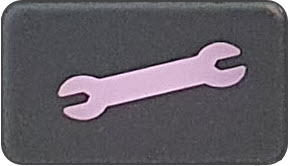Product |
Feature |
Notification |
Gateway 4 |
Control Port GPIOs |
Supports 8 control port inputs and 8 opto-isolated outputs via a single DB25 CONTROL PORT I/O connectors |
|
Software LIOs |
3 virtual inputs, 56 logical outputs, and 64 WheatNet Logic Inputs/Outputs |
Gateway 8/16 |
Control Port GPIOs |
Supports 16 control port inputs and 16 opto-isolated outputs via dual DB25 CONTROL PORT I/O connectors |
|
Software LIOs |
3 virtual inputs, 48 logical outputs, and 64 WheatNet Logic Inputs/Outputs |
Data must be enabled to activate contact CONTROL PORT closure operation and RS232 data. The codec supports both in-band and out-of-band data depending on the connection transport and algorithm you are using. In-band RPTP data is automatically included within an audio stream when using Tieline Music and Music PLUS algorithms over any transport. Over IP it is also possible to enable synchronized out-of-band data in separate packets using any algorithm.
Algorithm Selected |
IP |
ISDN |
Tieline Music and MusicPLUS |
•In-band RPTP data is enabled automatically •Synchronized out-of-band data can be enabled and disabled as required •Using out-of-band data with rules between G5 codecs employing relay reflection minimizes latency •These algorithms must be used when connected to G3 codecs as they don't support out-of-band data |
•In-band RPTP data is enabled automatically and used for all rules including relay reflection |
All other algorithms |
•No in-band data available; synchronized out-of-band data can be enabled and disabled |
•No in-band or out-of-band data available |
Select Enable Auxiliary Data when creating a program in the Program Manager panel or Connections panel to enable out-of-band RS232 data and activate rules employing relay reflection over a connection. This will allow the codec to connect to external devices and send RS232-compatible data via the serial port on the rear panel.
Please see Appendix A for RS232 and Control Port Wiring information.
Configuring Control Port Contact Closure Operation
The Rules panel in the Web-GUI can be used to configure switch inputs and relay outputs. Codec 'rules' configure events based on specific codec actions. Typically rules are based on a change in the state of a physical GPIO control port, or a Tieline or WheatNet-IP logic IO, or a codec program being connected or disconnected. Rules can only be created with the Web-GUI while the codec is disconnected. There are three ways to create rules in the HTML5 Toolbox Web-GUI:
1.Rules panel: Configure codec level rules related to programs and/or hardware and software I/O states.
2.Program Manager panel: Configure program level rules early in the Program Manager panel wizard.
3.Program Manager panel: Configure stream level rules for each audio stream as you proceed through the Program Manager panel wizard.
|
Important Note: •WheatNet logic I/Os allow Tieline WheatNet-IP enabled codecs to activate functions across a WheatNet-IP network. •A non-WheatNet-IP Tieline codec can be configured to trigger a WheatNet LIO in a Tieline WheatNet-IP codec. •Livewire GPIO ports are supported in the codec to activate functions across a Livewire network. |
See the section titled Creating Rules for more information.
Configuring RS232 Data
Once Data is enabled, the codec can be connected to external devices and transport RS232-compatible data via the serial port on the rear panel of the codec.
1.Press the SETTINGS  button.
button.
2.Navigate to System and press the  button.
button.
3.Select RS232 Config and press  .
.
4.Use the navigation buttons to select the correct baud rate.
5.Next, press  to toggle flow control On to enable flow control.
to toggle flow control On to enable flow control.
|
Important Notes: •When connecting to G3 codecs only in-band data is available via the Music and MusicPLUS algorithms. See RS232 Data Configuration for more details. •It is important that you enable serial port flow control within the codec. Flow control regulates the flow of data through the serial port. If disabled, data will flow unregulated and some may be lost. •Ensure you match the serial port baud rate to match the rate of the external device you are connecting to. Ideally the settings on both codecs should match, or you could have data overflow issues. •Only the dialing codec needs to be configured to send RS232 data to another Tieline G5 or G6 codec. Session data sent from the dialing codec configures the answering codec. •RS232 data can be sent from the dialing codec to all endpoints of a multi-unicast audio stream if your codec is capable of these connections. Note: Bidirectional RS232 data is only available on the first connection dialed when multi-unicasting. |
